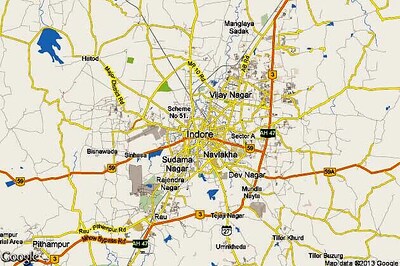
views
Ipsos IndiaBus Happiness Monitor that maps happiness quotient of Indians along the length and breadth of the country, across target groups, cohorts and demographics, shows largely Indians are a happy bunch. Two in three Indians (65%) claim to be happy in August 2024, although there has been a significant drop in happiness consecutively for two months: -5% in August and previously of -5% drop in July.
Citizens of the west zone (88%), tier 1 (85%), metros (74%), the north zone (73%), SEC A (72%), tier 2 (70%), high education (68%), employed – part time/ full time (68%), females (67%), 18-30 years (67%), full time parents/ homemakers (66%), students/ pupils (65%), 45+ age group (65%), SEC B (65%), 31-45 years (64%), males (64%), low education (64%) were seen to be the happiest. Citizens in tier3 (43%), the east zone (44%) and the south zone (46%) reported lowest happiness levels.
Elucidating on the findings of the survey, Parijat Chakraborty, Group Service Line Leader, Public Affairs, Corporate Reputation, ESG and CSR said, “Prima facie, while there is a significant dip in happiness levels from July, let’s not miss the woods for the trees – majority of Indians are in a happy state of mind, though the monsoon has wreaked havoc and adversely impacted several regions of India. We also see blips of dip in happiness levels across demographics, but once again majority of our citizens polled claim to be happy. The tragic rape and murder of a young doctor in Kolkata and the unrest in Manipur has seen happiness levels drop by -21% in the East zone. Natural calamities have impacted the southern region and the lower strata of society. On the other hand, happiness has surged for the metros, tier1 cities and the west zone.”
Biggest contributors to happiness
Family (73%) continues to be the biggest source of happiness in August 2024, followed by health (65%), friends’ circle (65%), colleagues/ business associates, employer or work (64%) and neighbours (57%), etc. Further happiness also depended on macro situations impacting the psyche of citizens. For instance, economic and financial conditions (53%), situation in the country (53%) and the situation in the world (49%). All the three areas have seen a significant decline in happiness of -6%, -4% and -4% respectively.
“Happiness isn’t just a state of mind. The Ipsos IndiaBus Happiness Monitor, month-on-month highlights the areas that drive happiness and depending on a plethora of areas and being defined by close family ties, personal wellbeing, social fabric, work situation and colleagues; one’s economic and financial condition has a significant bearing on happiness and likewise the macro areas of situation in the country and the world. Global turbulence or violence in the country can upset citizens and likewise financial squeeze, after all it is often said, money can buy happiness. Definitely retail therapy elevates happiness, likewise discretionary spends are done when the immediate economic needs are met, like eating out, shopping etc.,” added Chakraborty.
The Ipsos IndiaBus Happiness Monitor is a monthly, pan India omnibus (which also runs multiple client surveys), that uses a structured questionnaire and is conducted by Ipsos India on diverse topics among 2200+ respondents from SEC A, B and C households, covering adults of both genders from all four zones in the country.
The survey is conducted in metros, tier 1, tier 2 and tier 3 towns, providing a more robust and representative view of urban Indians. The respondents were polled face to face and online. There is city-level quota for each demographic segment that ensures the waves are identical with no additional sampling error. The data is weighted by demographics and city-class population to arrive at national average. Data collection is done every month and the results are calculated on two-months’ rolling sample.




















Comments
0 comment